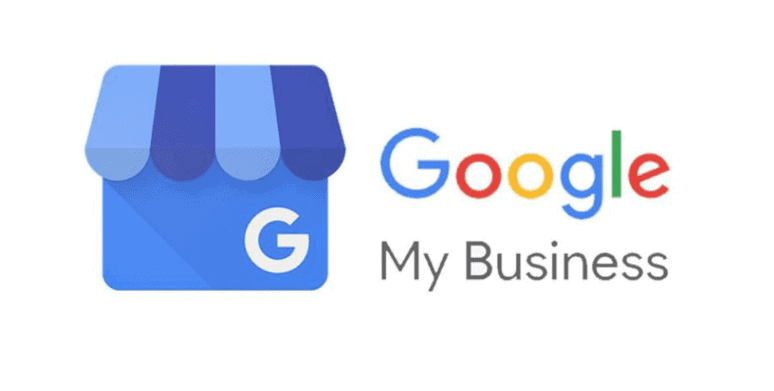Google Business Profile: 7 Local SEO Tips (2025 Update)
Ready to supercharge your local affiliate marketing game and watch your search ranking skyrocket? The key lies in mastering Google Business Profile SEO. Formerly known as Google My Business, your Business Profile is the single most powerful asset you have for attracting potential customers searching for local services and products.
Consider this: optimizing your Google Business Profile can lead to a 5x increase in views compared to unoptimized listings. A BrightLocal study also revealed that 90% of consumers use the internet to find local businesses for users, and your Google Business Profile is often their first impression.
This definitive guide is your A-Z blueprint for claiming, optimizing, and leveraging your Google Business Profile to achieve unparalleled local SEO results. We’re not just talking about basic setup; we’re talking about advanced strategies to dominate Google Maps for Local and convert those search views into paying customers!
Key Takeaways:
- Claim and verify your Google Business Profile.
- Optimize every aspect of your profile for maximum visibility and engagement.
- Prioritize high-quality photos and videos.
- Actively solicit and manage customer reviews.
- Integrate your Business Profile into your overall SEO strategy.
- Leverage GMB Insights to track your progress and make data-driven decisions.
What is Google Business Profile (Formerly Google My Business) and Why Is It THE Local SEO Game-Changer?
Google Business Profile, previously Google My Business, is Google’s free business listing platform that showcases your business details in Google Search and Maps results. Think of it as your dynamic business card on Google. It’s the gateway for potential customers to discover your business location, contact you, and learn what you offer. For affiliate marketers promoting local businesses, it is the goose that lays the golden egg.
Why Your Business NEEDS a Google Business Profile:
- Unmatched Visibility in Relevant Searches: Your Business Profile ensures your business appears in “near me” searches, Google Maps, and the coveted Google’s local 3-Pack, instantly connecting you with potential customers.
- Direct Customer Interaction: Potential customers can directly access your contact information, business address, directions, website, star rating average, and even customer reviews, all from your Business Profile. It facilitates immediate customer interaction.
- Building Trust and Authority (Social Proof): A complete, optimized, and regularly updated Google Business Profile establishes trust and authority, reassuring prospective customers of your legitimate business. This is called social proof.
- Supercharged Search Engine Optimization: Google uses the information from your Google Business Profile as a significant ranking signal for local search engine optimization, influencing your visibility in relevant searches and direct searches. If you want to rank for organic search this is a must.
- Showcase Special Attributes: Highlight your special attributes to appeal to specific customers. For example, if you promote delivery restaurants or dine-in restaurants, showcase those features prominently.
The Importance of Google My Business
- Quote: “A fully optimized Google Business Profile is no longer optional; it’s essential for business success in today’s local search landscape.” – An AI Expert on affiliate marketing SEO
- Research: A study by ReviewTrackers showed that 94% of consumers read online reviews before making a purchase, and your Google Business Profile customer reviews displays these prominently.
- Example: Imagine you’re promoting a local coffee shop affiliate offer. A well-crafted Business Profile featuring photos of the café menu, enthusiastic customer reviews, and easy directions requests from Google Maps will drive significantly more traffic and conversions than a basic listing. This is key for business success.
- Statistics: Businesses with complete Google Business Profiles experience 7x more clicks and have a 2.7x greater chance of being considered reputable compared to those with incomplete profiles.
Claiming and Optimizing Your Google Business Profile: A Step-by-Step Guide
Claim Your Listing (or Create One):
- Visit Google Business Profile and sign in with your Google account (ideally one dedicated to your business).
- Search for your business name and physical location. If it already exists, claim it! If not, create a new listing, providing your physical address.
- Service Area Business should indicate their service area clearly.
Verification is Paramount:
- Google will typically verify your listing by sending a postcard with a code to your business address. Follow the instructions meticulously. Verification unlocks the full potential of your Business Profile.
- For eligible businesses, alternative verification methods like phone or email may be available.
Complete Every Section of Your Business Profile:
- Business Name: Use your exact registered business name.
- Address: Enter your accurate physical address. If you’re a service-based business or a Service Area Business, you can hide your address and only display your service area.
- Phone Number: Use a local phone number for your business.
- Website: Link directly to your website – ideally a geo-targeted landing page optimized for your target keywords and location.
- Primary Category: Select the most accurate primary category for your business from Google’s drop-down list.
- Secondary Categories: Add up to ten secondary categories to further define your business type and increase visibility in relevant searches. Explore additional categories for maximum effect.
- Business Description: Craft a compelling and target keywords-rich business description (750 characters maximum). Focus on the unique value proposition of your business and incorporate relevant keywords naturally to improve Business SEO. Consider what search intent your potential customers may have.
- Business Hours: Enter your precise business hours, including hours for holidays and holiday hours. Accurate business hours is a must have.
- Photos: Upload high-quality photos (more on this below).
- Attributes: Choose relevant special attributes to highlight unique features.
- Products/Services: List your products and services with detailed descriptions and pricing.
- Google Posts: Regularly publish Google Posts to share updates, promotions, events, and offers.
- Q&A: Proactively populate the Questions & Answers section with common questions and helpful answers.
- Customer Reviews: Encourage customer reviews and respond to all feedback.
The Ultimate Google Business Profile SEO Checklist: Dominate Local Search!
- Keyword Research Powerhouse: Use tools like SEMrush or Ahrefs to identify high-volume, low-competition target keywords relevant to your business category and location.
- Geo-Targeted Landing Pages: Create hyper-focused landing pages on your website, explicitly targeting your local area. This is HUGE for converting search views!
- Local Citations Domination: Build citations on relevant Business Directory Listings and industry-specific websites.
- Schema Markup Implementation: Implement schema markup (LocalBusiness schema is key) on your website to provide Google with structured data.
- Google Posts Mastery: Regularly create engaging Google Posts to share updates, promotions, events, and offers. Experiment with different post type to see what resonates with your audience.
- Monitor Performance with Google Analytics and Google Search Console: Track traffic and user signal metrics from your Business Profile to your website using Google Analytics. Use Google Search Console to monitor your search query performance and identify opportunities for improvement. Analyze GMB Insights to better understand customer behavior.
- Review Management Strategy: Actively solicit positive reviews from satisfied customers and promptly address negative review concerns.
Photos: The Visual Magnet for Potential Customers
- Logo: A professional, high-resolution logo is essential for branding.
- Cover Photo: Choose a compelling image that represents your business and captures the attention of potential customers.
- Interior Photos: Show off the ambiance and atmosphere of your business.
- Exterior Photos: Make it easy for customers to find your physical location with clear exterior photos.
- Product/Service Photos: Showcase your best-selling products or services in action.
- Team Photos: Humanize your business by introducing your team.
Reviews: Your Social Proof Currency
- Ask for Reviews: The simplest and most effective way to get business reviews is to ask your satisfied customers. Make it easy for them to leave a review by providing a direct link to your Google Reviews page.
- Respond to All Reviews: Respond to all customer reviews, both positive reviews and negative review instances.
- Address Negative Reviews Professionally: When dealing with a bad review, remain calm, apologize for the inconvenience, and offer a solution to rectify the situation.
Google Business Profile for Local Affiliate Marketing: Examples That Convert
- Local Restaurant Guide: Promote local restaurants by creating a Google Business Profile for your restaurant review website.
- Home Services Directory: Connect homeowners with local plumbers, electricians, and contractors by building a Business Profile for your home services directory.
- Local Tour Operator: Help tourists discover the best local experiences by creating a Google Business Profile for your tour booking website.
Common Google Business Profile Mistakes to Avoid
- NAP Inconsistency: Ensure your name, address, and phone number are consistent across all online platforms.
- Keyword Stuffing: Don’t overload your business name or description with target keywords.
- Ignoring Reviews: Responding to reviews shows that you value your customers’ feedback.
- Outdated Information: Keep your business details up-to-date.
- Duplicate Listings: Identify and remove any duplicate listings to avoid confusion.
Integrating Your Business Profile into a Holistic SEO Strategy
Your Google Business Profile should be seamlessly integrated into your overall SEO strategy.
- Content Marketing Synergies: Create blog content targeting local keywords.
- Local Link Building: Secure backlinks from other local business owners and websites.
- Social Media Amplification: Promote your Business Profile and local content on social media platforms.
- Digital Marketing: Combine Google Business Profile SEO with email marketing, Google Ads, and content marketing.
- Messaging Feature: Enable and actively monitor the messaging feature to engage with potential customers in real-time.
Understanding GMB Insights: Turning Data into Action
GMB Insights is your built-in analytical tool, providing valuable data on how potential customers are interacting with your Google Business Profile. Track data like:
- Search views and Maps views.
- Direct or Discovery Searches
- Customer actions: track direction requests, website clicks, and phone calls.
- Direction requests
- Calls customers
- Bulk insights for multiple locations.
Analyzing this data will help you refine your SEO strategy and optimize your profile for maximum impact. For example, if you see a high volume of direction requests, ensure your physical location is accurately marked on Google Maps.
Conclusion: Unleash Your Local SEO Powerhouse with Google Business Profile!
Google Business Profile SEO is no longer optional; it is the cornerstone of local digital marketing. By meticulously following the strategies outlined in this comprehensive guide, you can optimize your Business Profile, attract a flood of potential customers, and achieve unprecedented affiliate marketing business success!
Ready to dominate local search and unlock explosive affiliate marketing growth?
Start optimizing your Google Business Profile today! Click here to explore our curated list of top-rated local SEO tools and resources!
References:
[1] https://www.saffronedge.com/blog/what-are-the-benefits-of-using-google-my-business-for-your-local-seo/
[2] https://www.seospace.co/blog/local-seo-google-my-business
[3] https://www.ihealthspot.com/blog/how-does-google-business-profile-help-seo-why-its-important/
[4] https://victorious.com/blog/google-business-optimization/
[5] https://neilpatel.com/blog/optimize-google-my-business/
[6] https://www.hostinger.com/tutorials/google-my-business-seo/
[7] https://wsisme.com/blog/google-business-profile-benefits/
[8] https://databox.com/google-my-business-seo
[9] https://www.onthemap.com/blog/how-to-optimize-google-my-business/
[10] https://circleboom.com/blog/how-do-google-my-business-posts-help-seo/
[11] https://www.gmbcrush.com/google-map-seo/google-my-business-posts/
[12] https://skedsocial.com/blog/google-business-profile-and-local-seo
[13] https://victorious.com/blog/google-business-optimization/
[14] https://www.webfx.com/local-seo/learn/google-my-business-benefits/
[15] https://www.linkedin.com/pulse/understanding-google-my-business-its-role-local-seo-leadsview-y7yjc
[16] https://www.digitalthirdcoast.com/blog/primary-benefits-of-google-business-profile-formerly-google-my-business
[17] https://support.google.com/business/answer/7091?hl=en
[18] https://www.webfx.com/blog/seo/google-my-business-listing-seo/
[19] https://yoast.com/google-my-business/
[20] https://aioseo.com/how-to-use-a-google-business-profile-to-imrpove-local-seo/
[21] https://www.youtube.com/watch?v=8ET44Ai5SSw
I’m Alexios Papaioannou, an experienced affiliate marketer and content creator. With a decade of expertise, I excel in crafting engaging blog posts to boost your brand. My love for running fuels my creativity. Let’s create exceptional content together!













